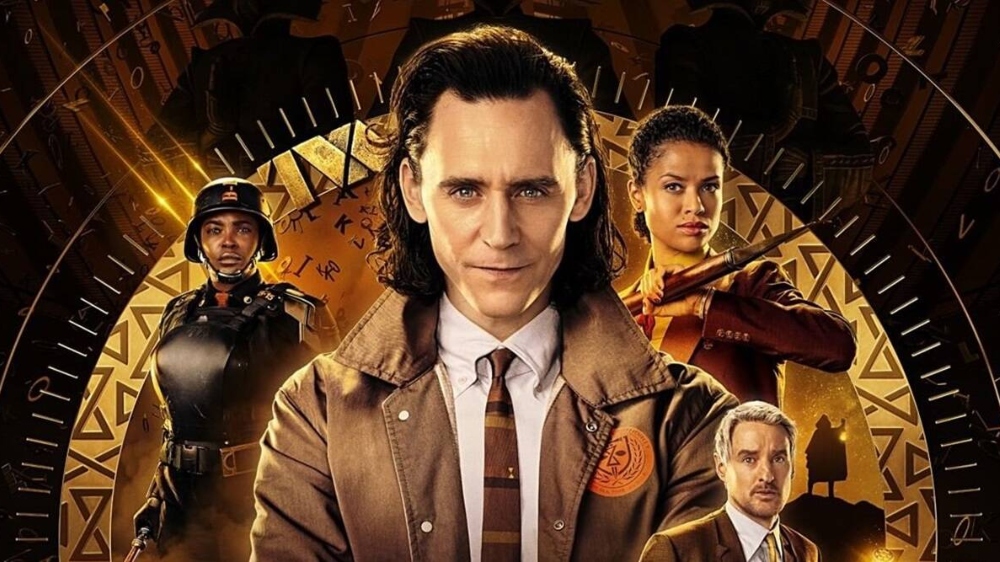
Cinematographer Autumn Durald Arkapaw usually works with friends, but the offer to work on Loki came through her agent. Regardless of how she found her way to the high-profile project, Arkapaw was delighted by the opportunity to shoot one of Marvel’s first series for Disney+, though she knew it would be a daunting task.
Below the Line recently spoke to Arkapaw, who revealed her favorite set on the series and talked about fighting for practical ceilings on the show because ceilings often pose a problem, though all of the sets presented their own unique challenges. She also explains how she pushed for authenticity as much as possible in Loki‘s design work.
Because of her work on the series, Arkapaw got to play in the Marvel sandbox once again, as she also shot Ryan Coogler‘s upcoming sequel Black Panther: Wakanda Forever, which hits theaters in November. The sequel represents a major opportunity for Arkapaw, one that never would’ve happened had she not enrolled in a master’s program at AFI, where she honed her craft early in her career. Get to know her below:
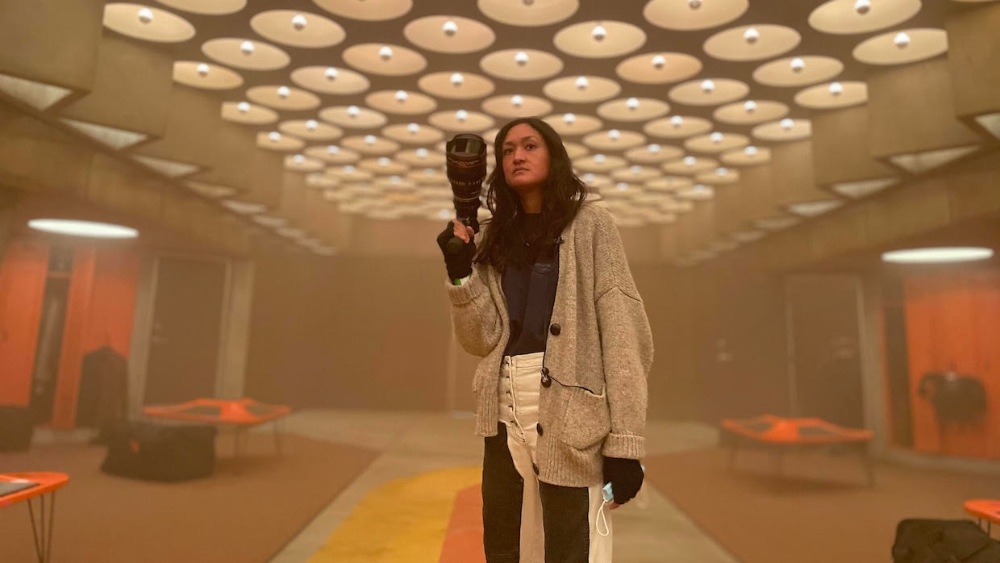
Below the Line: How did you first become attached to work on Loki?
Autumn Durald Arkapaw: It’s something that came through my agent. I hadn’t known Kate [Herron] previously. Generally, I work with a lot of my friends and I hadn’t known her or through a friend. I went to the meeting based off of the fact that Marvel was starting these new series and it seemed very intriguing, and as a fan of Loki. That’s how I got the meeting, essentially. Once I was there, we really just hit it off. There were some producers in the room, Marvel execs, and [the] line producer. It was just a great fit. A lot of the references that she was presenting were in line with how I like to shoot, [both] lighting-wise and [with] the tone. We shared kind of the same… I had read an episode and had my own thoughts, and] she actually shared those same kinds of visual film [references] in her lookbook that she showed me during the meeting.
BTL: With Loki being your first MCU project and one of Marvel’s first series, did it ever feel like a daunting task?
Arkapaw: Yeah. I mean, obviously, it was very, very big for me. Going into it, I think the selection of people — heads of departments that she chose and the kind of group that was put together — were all so supportive, constantly, and very, very creative. [They] allowed us to come up with new ideas — no holds barred — in being able to create something new that [had] never been done before. In that regard, it never really crossed my mind that it was a huge undertaking until we went into production. That was mostly for time restrictions because there’s always just so much to shoot on a day-to-day basis when you’re doing television at this level. You’re at the level of a Marvel film but then you’re also having to execute six episodes and lots of pages during the shoot day. I think it was more fun and supportive and it always felt pretty good. It didn’t ever feel too bad until you have to get to executing and that’s where it becomes a little bit more daunting.

BTL: What sort of camera and lens did you use?
Arkapaw: I used a Sony Venice and am a mostly 90 percent Panavision shooter, so I have a great collaboration with them. I shot [with an] expanded T series for the Sony Venice large sensor. That’s an anamorphic glass. Dan Sasaki over at Panavision and I worked to tune them to our liking for just certain characteristics that I [was] interested in exploring for the show.
BTL: Loki utilized both practical sets and locations. Did you have a favorite set or location in terms of lighting?
Arkapaw: One of my favorite sets was the Time Theater, which is where Loki and Mobius meet, and he’s interrogated in there when they first get to know each other. It was a very amazing set and we fought to have practical ceilings on this project. Kasra Farahani, the production designer, had some really beautiful, brutalist architecture references early on with great lighting sources. That was kind of a big set for us because it’s sprinkled throughout all episodes but also, it was just a beautiful set to walk into because everything you’ve seen there is real besides the projections. We had real light effects for those but they are visual effects video projections. It’s a great space and that’s probably one of my favorite spaces.
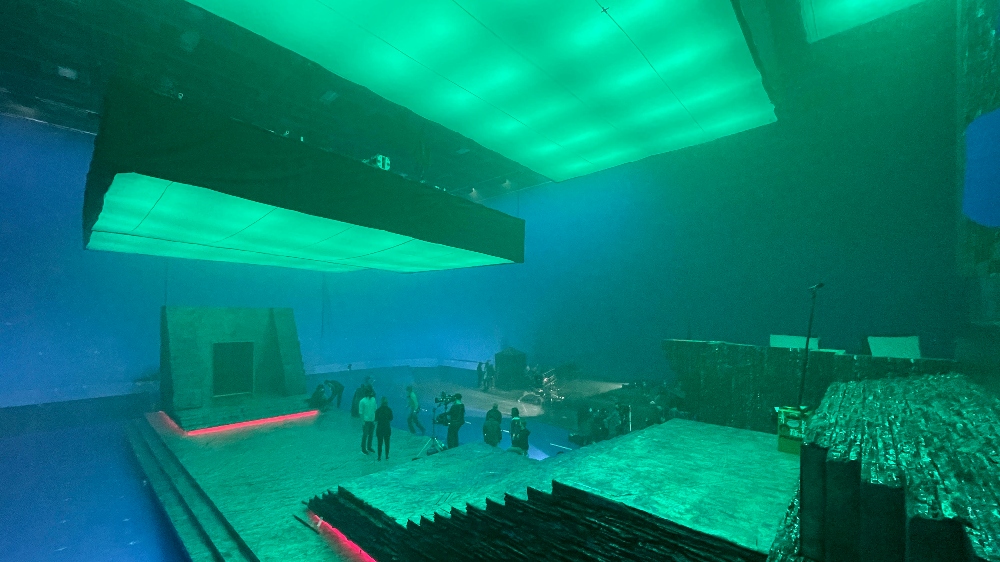
BTL: Was there a set or location that provided a challenge?
Arkapaw: I think all of our sets were very complex and very intricate. The design and the lighting in them were all very thought out. All departments had a lot on their plate, especially when working with practical ceilings. They’re very heavy and construction having to rig those, and electric and grip, also, being part of that process, trying to figure out ways to make it efficient. I like to move fast and I have a great team, gaffer, and key grip. All of those elements make building each set very complex. I’d say most of our sets had that kind of vibe but we had such a great team, we were able to pull it off for most of… I can’t recall how many sets we have, but if you’ve seen the series, there are many.
BTL: I watched it last year.
Arkapaw: Okay, yeah.
BTL: In terms of cinematography, how did the pandemic change up your usual process?
Arkapaw: It’s interesting. We were in production on Loki when that happened. Maybe three months or something like that? We took a break. Maybe less than three months, maybe it was only a few weeks, actually. I can’t recall exactly. We took a break and while we took that break and the world took that break, we also stayed in prep. For me, it was all around very hard on everyone family-wise, but I was still in the mode of Loki. So creatively, we were still discussing [it and] having meetings on Zoom and still working from home on this project. It didn’t really have that stall, but it’s great to have the opportunity to take a break and look back, because we had started shooting. There was footage to look at. Kate was editing. We were very lucky to have that break.
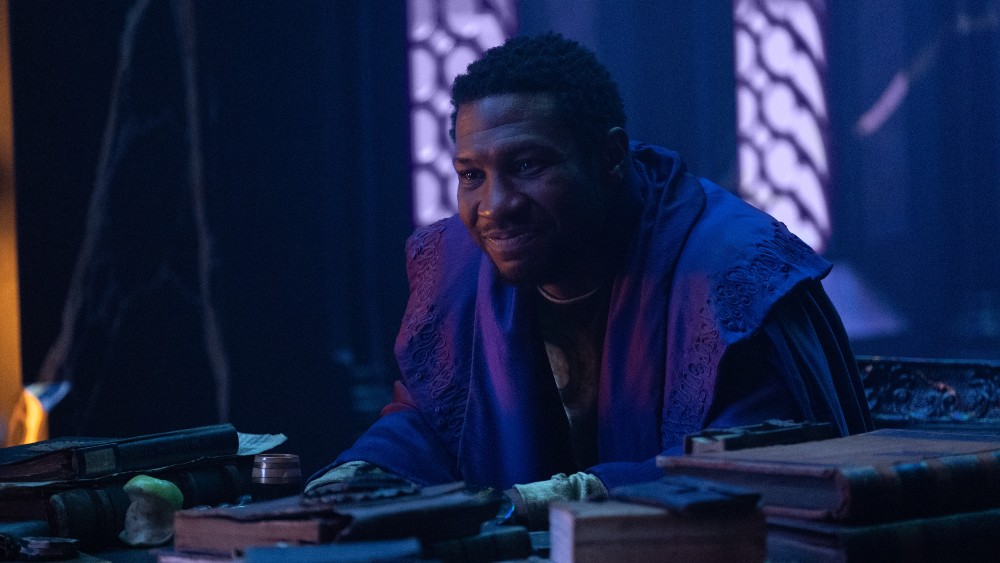
BTL: The series visits different periods in both the past and future. What were you going for in terms of the look so as to feel grounded but set those periods apart from the look of the TVA?
Arkapaw: I think it was very much to try and be authentic as far as costume and design. Obviously, they ended up in the futuristic Roxxcart. There are design elements in there that Kasra and Kate came up with in early renderings that we all discussed — color and different types of LED lights and what would happen there, because we had some opportunities since it was in the future. As far as the Renaissance Fair and stuff, I think it was to try and make the space that they were coming into feel authentic as far as what was on the page and design-wise and lighting. Hopefully, that came across. But yeah, I think it was so the audience could feel like it was a real place that they were going back in time to or forward in time.
BTL: How did you first become interested in cinematography?
Arkapaw: I had a background in art history. I went to Loyola Marymount, which is in Los Angeles, for undergrad and art history, for [my] bachelor’s [degree]. I was always doing art and photography, [so] it wasn’t until a little bit later. I’ve always watched movies — my mom would always take me to the theater growing up. It was taking that photography background, always taking pictures of my friends and then getting a little camcorder. I used to make videos of my friends and little movies and iMovie. I started looking into why these films are so complex when I had a film course at LMU. It was like a genre course. We watched Raging Bull and Broadway Danny Rose, which are two of my favorite films to this day. I started looking into, like, what a DP does, because I was so interested in what that meant. In looking into that, I ended up taking [an] extension course at UCLA while also working a day job in advertising. I had a day job out of college and then took some time to look into doing free work on sets, and then ultimately landed at AFI in their master’s program for cinematography. That’s how it kind of came about as far as the timeline for me getting into it. Prior to that, it was just working as much as I could to shoot and get out there and be on set.
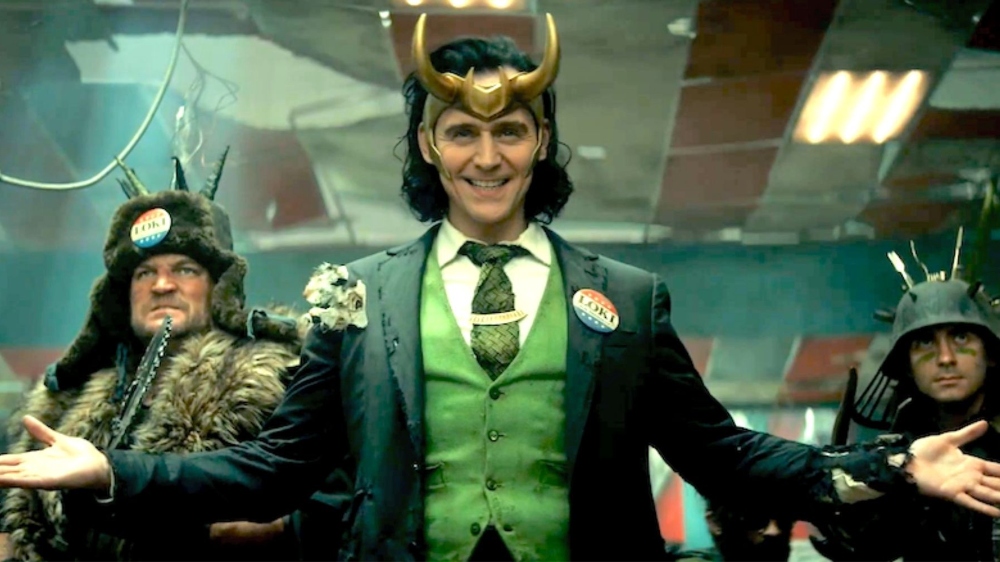
BTL: Did you ever have a mentor during your early years in the business?
Arkapaw: I reached out to people. I kind of found my way to students at AFI when — I think I used Mandy.com when I was looking for ways to get on sets and just learn and watch. Steven Lighthill, who’s the head of [the] cinematography department at AFI — also, I didn’t get into AFI the first year I applied — he gave me some advice to get out there. He was always someone I came back to after I met him. Also, I met Bill Pope, who’s the cinematographer that did The Matrix, and met him early on through a work friend, and he would give me advice from time to time and I’d visit his sets. I didn’t have someone that shepherded me through the whole thing because I was able to go to AFI, and then after you go to AFI, you’re kind of checking back in with people in that program. I was very lucky to have some connections to the film world [whom] I could ask questions.
BTL: How valuable was the AFI program?
Arkapaw: Yeah, it’s huge. I always speak on that. I do a lot of talks there when I can. I think for me it was a big deal because I didn’t have an undergrad in film. Some of the students there come into that program with undergrad and an understanding of how sets work and [how] films are made, but I didn’t. I just had a photography background. Obviously, once he told me to go back, after I didn’t get in the first year, and learn, I put myself on a set for a documentary TV show. I think it was huge for me because I learned how to make films there. We made a lot of short films there. You make three short films, you make an MLS project, which I made a Chanel spec, and then you do a thesis film. After AFI, I knew what filmmaking meant. I knew what the cinematographer did and every other department on set. Luckily, in between my first and second year at AFI, I met some people there, a director and producer, and we shot our first feature during the summer on film, [and] that did well at a film festival after we graduated. I was very lucky to leave AFI with actually a small mumblecore feature. It was huge for me. I owe a lot to AFI.
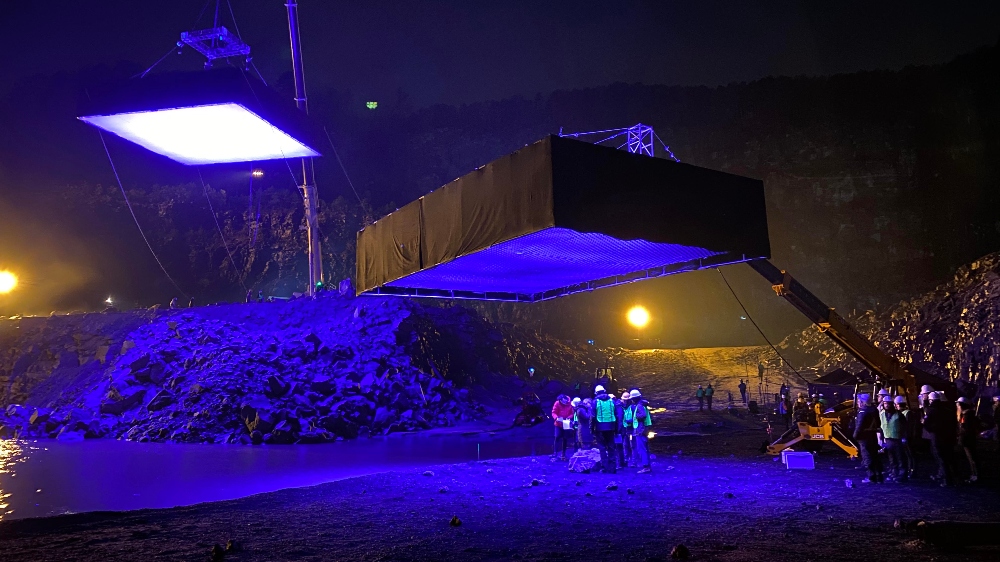
BTL: Do you prefer shooting on film or digital?
Arkapaw: It depends, honestly, on the project. I came up on film. I shot a lot of film at AFI and then throughout my career, I’ve shot a good amount of film. It comes up from time to time commercially. My past features recently have not been on film. I adore it, but also, it depends on the project, too. Obviously, for Loki, I think I’m always trying to make something look like film. That’s kind of the aesthetic thing that’s important to me, that it has texture and personality and is nostalgic, just like film can do. It depends on the project, but with digital, I think you can do things that can help carry that look forward. If you’re fortunate enough to have a project to shoot [on] film, it’s always beautiful and very surprising when you get to see your dailies because nothing’s like it.
BTL: I saw that you’re doing the cinematography for Black Panther: Wakanda Forever. How much fun was it being able to step into the Marvel playground again?
Arkapaw: It was amazing. I think I had found out about that job and got the job while I was still kind of wrapping up Loki. It was very exciting. I’m a big fan of Ryan’s. He’s a great friend now. That was the first time we worked together and that was that project. It was amazing because you build kind of a family on set. I had a lot of great crew and met a lot of great people at Marvel on Loki, and then was able to work with some of those people again, and new people. It’s just such a supportive environment, especially for being creative, having resources, being able to do new things, and push the bar. I was very excited about that.
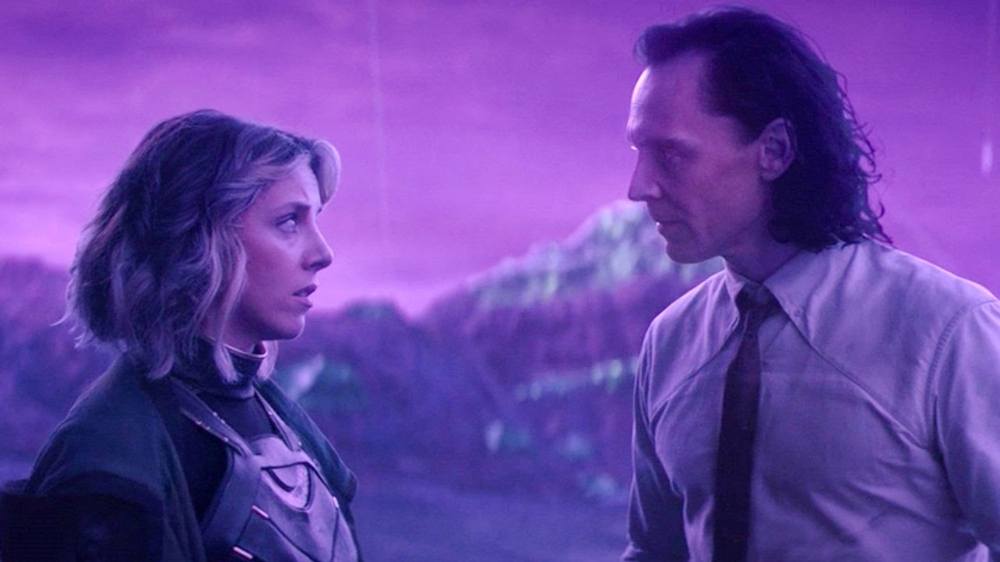
BTL: What advice would you give to someone who wants to work in cinematography someday?
Arkapaw: Yeah, I think it’s tricky, right? Because the film business — it’s changed so much from when I started, so I think about that question a lot. The environment now, there’s so much content. There’s a lot on TV. Because there is a lot of work out there, some more cinematic than others, the passion has to be there. You just have to really, really put yourself in the environment and shoot as much as you can. Frame as much as you can. Meet as many people as you can. Work as hard as you can so when you meet those people, they remember you. Have a point of view. I think that’s really important because, again, there’s so much content out there. It’s so personal and being a cinematographer is such a personal thing, I’m not going to shoot something like anybody else would because I have [a] different life experience and set of eyes. I think infusing your own history, personal life, and point of view is super important to remember if you want to do that job, and also whilst you’re doing it.
BTL: I would be remiss if I did not mention that Teen Spirit was one of my favorite films at the 2018 Toronto International Film Festival.
Arkapaw: Oh, wow. That’s amazing. Thank you for saying that. That was a very, very special film, so the fact that that meant something to you, I appreciate that. The group of people that made that were lovely.
BTL: I actually did the junket at SXSW in 2019.
Arkapaw: Oh, you did?
BTL: Yeah. I just ran into Elle Fanning before the Critics Choice Awards in March and we chatted for a bit.
Arkapaw: Oh, cool. I mean, obviously, you know about it. She sang all her own songs, so to be there recording her doing that for the first time, I mean… she’s such a brilliant actress, but with the singing, she killed it.
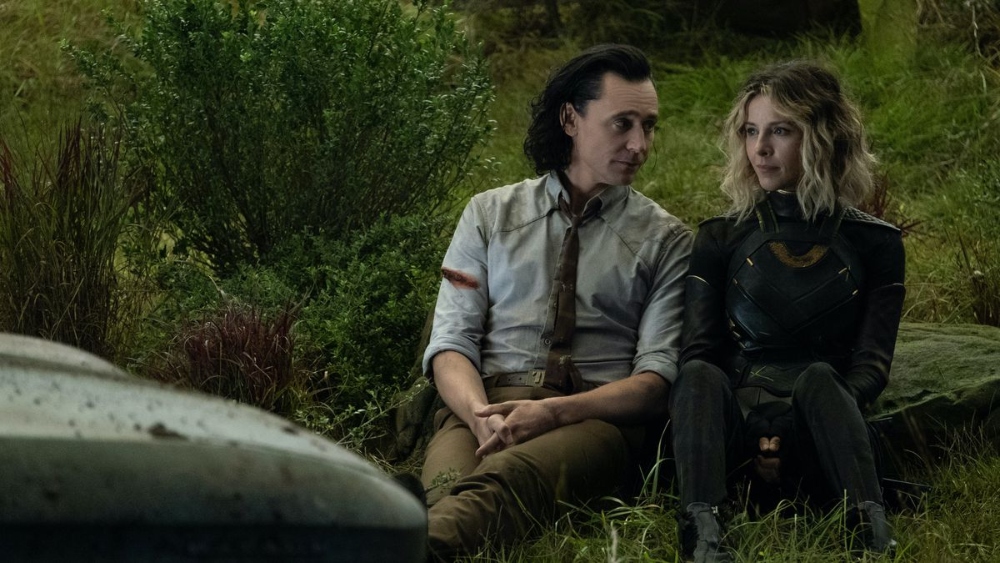
BTL: On that note, do you find any differences between indie movies like Teen Spirit and big Marvel projects?
Arkapaw: I was talking to someone today about doing a screening, and showing some Marvel work and indie work. We felt that screening [would help] some cinematography students learning. It was an interesting conversation because I think after you have the experience of shooting more indie work and then going to big-budget [projects], there are a lot of similarities that you wouldn’t expect. I think any project is hard. Making films is hard whether you have a lot of money or not. I think it’s what’s on the page that can potentially make something easier. If things are produced and budgeted for what’s on the page, you hope that things can be a little easier on you, but it tends to be the opposite. There’s never enough money to execute exactly what’s on the page so you’re trying to fit just a big peg in the small hole constantly, butting your head against the wall. I feel in that regard, it’s always challenging, whether it’s small or big, because you want it to be good no matter what.
What’s great about bigger projects is you can play more. Obviously, you have more toys; you have more time. But it still feels like you don’t have enough time on the big ones as well. [Laughs] It’s hard to say. I mean, you’re speaking to film students and they want to use cranes and you want amazing sets. I think one thing that I appreciate is when you get to a certain level and your production designer has money to execute very architectural sets, and you’re building sets, that’s a beautiful thing — you can collaborate with him or her on the way you like to shoot, where you want the light sources to come from. That whole process is beautiful and fun because the outcome is very personal to the people working on it.
When you’re doing indie films, you’re choosing maybe locations — for instance, Teen Spirit, where we’re going and scouting five houses for her farm home. Four of them aren’t great but we’re lucky enough to find this fifth one and the light comes in how you perfectly like it. You’re getting lucky there, right? You’re crossing your fingers. But sometimes you’re not lucky on the small films and you’re having to have locations that aren’t so great and having to fix that. But you can’t obviously rebuild anything. You have to work with it. So yeah, I think that answers your question. That’s what comes to mind the most.
BTL: It’s funny, whenever I talk with indie filmmakers, I always ask what’s the most challenging aspect of the production. Nine times out of 10, they always say ‘not enough time.’
Arkapaw: Yes, exactly. Small or big, not enough time. If only the scripts were written. I mean, I think there are obviously filmmakers, right, you hear these stories where director/writers will write something and say, I’m not willing to compromise on the amount of days that I need, right? Obviously, days cost money. In that regard, they feel they need a certain amount of days to execute that script and that’s always great, right? Because that’s the time factor. If you don’t have enough time to shoot the script, that’s going to make it hard in the edit to tell the story properly. There are so many factors, it’s really hard to say.
Season 1 of Loki is currently streaming on Disney+.





